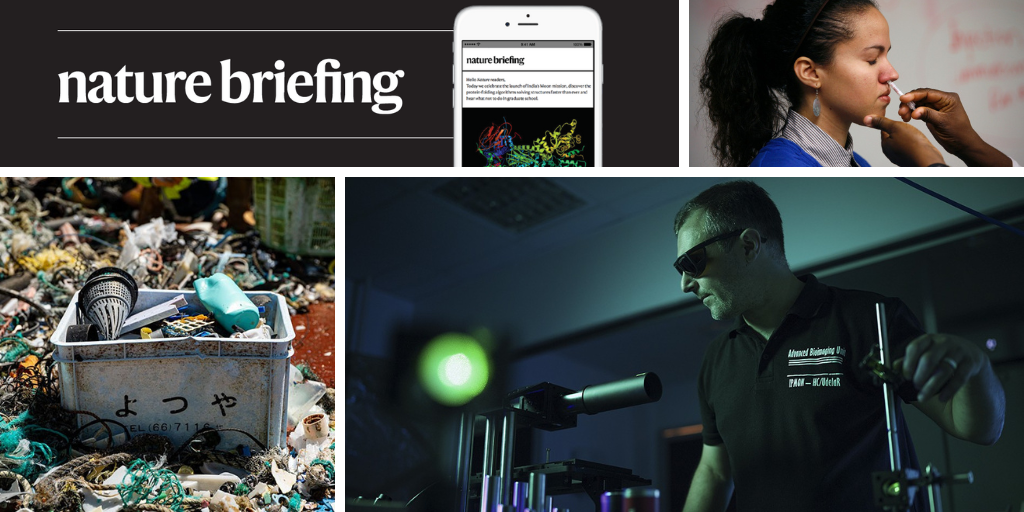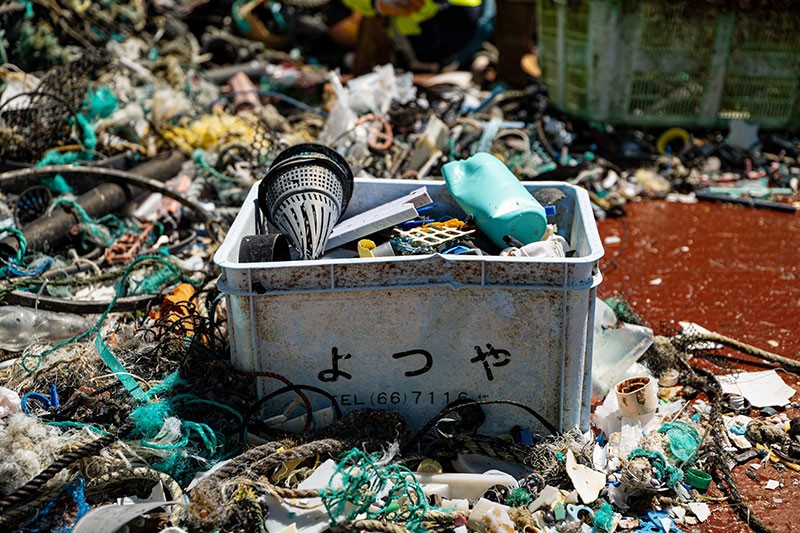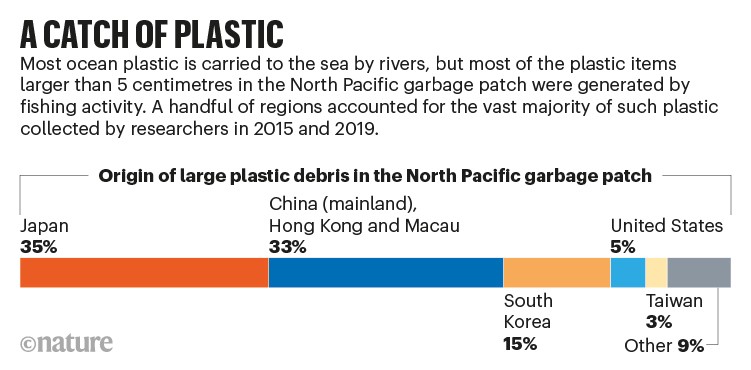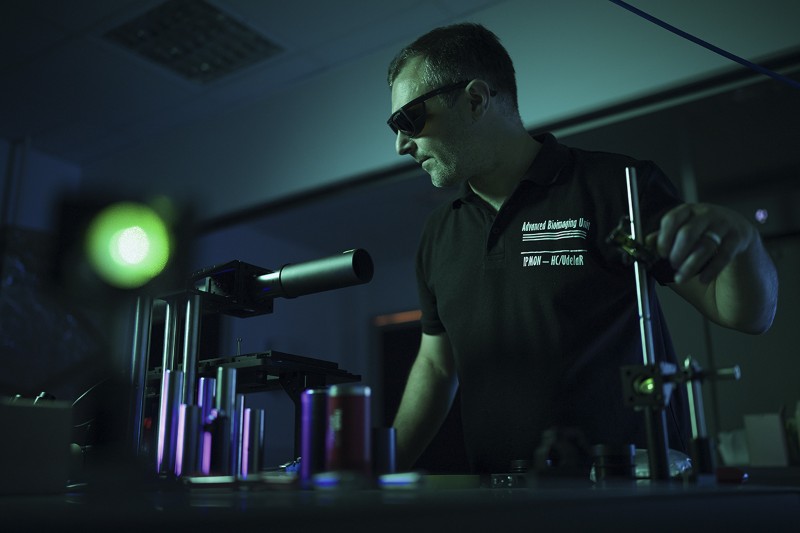Hello Nature readers, would you like to get this Briefing in your inbox free every day? Sign up here.
Fishing gear makes up most of the large plastic debris in the ‘North Pacific garbage patch’, an area of the ocean where currents converge and an estimated 80,000 tonnes of plastic have accumulated. One-third of the identified things in a survey of more than 6,000 floating items came from Japan — possibly in part because of the tsunami that hit the country in 2011. The finding suggests that rubbish expelled from rivers — thought to be the source of most ocean plastic — ends up in coastal areas, not the garbage patch. “What this paper and other investigations have shown is that there is really one sector — fishing — responsible for this plastic,” says ocean researcher Lisa Erdle.
Reference: Scientific Reports paper
Researchers used machine learning to investigate whether more-highly cited journals have higher-quality peer review. They invented proxy measures for quality and found that the differences between high- and low-impact journals were modest and variability was high. This suggests that a journal’s impact factor is “a bad predictor for the quality of review of an individual manuscript”, they say. Anna Severin, who led the study as part of her PhD in science policy and scholarly publishing, spoke to Nature about this work and other efforts to study peer review on a large scale.
Features & opinion
This week, an inhaled version of a COVID-19 vaccine was approved for use as a booster dose in China. The vaccine, produced by Chinese biotechnology firm CanSino Biologics, is one of more than 100 oral or nasal vaccines in development around the world. In theory, these vaccines could prime immune cells in the thin mucous membranes that line cavities in the nose and mouth where SARS-CoV-2 enters the body, and quickly stop the virus before it spreads. Vaccine developers hope that these ‘mucosal’ vaccines will prevent even mild cases of illness and block transmission to other people, achieving what’s known as sterilizing immunity.
No other country produces as much nuclear power per capita as France, and its leadership in the field has long been a source of national pride. The need to phase out fossil fuels has even tempted some long-time opponents to grudgingly support nuclear energy. And it has taken on fresh saliency as global energy prices spike in response to Russia’s invasion of Ukraine. But half of France’s nuclear reactors are now offline because they need maintenance or because the ongoing heatwave has curtailed the supply of water needed to cool the reactors. And government support for the technology has run hot and cold.
This article is part of Nature Spotlight: Science in France, an editorially independent supplement.
The US government announced last month that research articles and most underlying data generated with federal funds should be made publicly available without cost. But that policy, and ones like it, will not achieve the goal of making data more accessible, because most of those data will be unfindable. Policies and infrastructure are needed to organize metadata, says biomedical informaticist Mark Musen. “Because the metadata are so ad hoc, automated searches fail, and investigators waste enormous amounts of time,” he writes. “Metadata for data sets must stand on their own.”
Where I work
Leonel Malacrida hopes that his lab’s imaging technology will advance cancer diagnosis and research in Uruguay and across Latin America. (Nature | 3 min read)









More News
Could bird flu in cows lead to a human outbreak? Slow response worries scientists
US halts funding to controversial virus-hunting group: what researchers think
How high-fat diets feed breast cancer